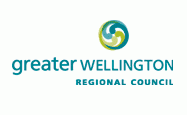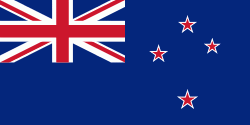Wellington Region (Wellington)
 |
The region takes its name from Wellington, New Zealand's capital city and the region's seat. The Wellington urban area, including the cities of Wellington, Porirua, Lower Hutt, and Upper Hutt, accounts for (0+0+0+0)/0*100 percent of the region's population; other major urban areas include the Kapiti conurbation (Waikanae, Paraparaumu, Raumati Beach, Raumati South, and Paekākāriki) and the town of Masterton.
The region is administered by the Wellington Regional Council, which uses the promotional name Greater Wellington Regional Council.
The council region covers the conurbation around the capital city, Wellington, and the cities of Lower Hutt, Porirua, and Upper Hutt, each of which has a rural hinterland; it extends up the west coast of the North Island, taking in the coastal settlements of the Kapiti Coast District; east of the Remutaka Range it includes three largely rural districts containing most of Wairarapa, covering the towns of Masterton, Carterton, Greytown, Featherston and Martinborough. The Wellington Regional Council was first formed in 1980 from a merger of the Wellington Regional Planning Authority and the Wellington Regional Water Board.
Following the creation of the Auckland Council 'super-city' in 2009, a similar merger for councils within the Wellington Region was investigated by the Local Government Commission in 2013. The proposal was scrapped in 2015 following negative public feedback.
Map - Wellington Region (Wellington)
Map
Country - New_Zealand
 |
 |
| Flag of New Zealand | |
The islands of New Zealand were the last large habitable land to be settled by humans. Between about 1280 and 1350, Polynesians began to settle in the islands and then developed a distinctive Māori culture. In 1642, the Dutch explorer Abel Tasman became the first European to sight and record New Zealand. In 1840, representatives of the United Kingdom and Māori chiefs signed the Treaty of Waitangi, which in its English version declared British sovereignty over the islands. In 1841, New Zealand became a colony within the British Empire. Subsequently, a series of conflicts between the colonial government and Māori tribes resulted in the alienation and confiscation of large amounts of Māori land. New Zealand became a dominion in 1907; it gained full statutory independence in 1947, retaining the monarch as head of state. Today, the majority of New Zealand's population of 5.1 million is of European descent; the indigenous Māori are the largest minority, followed by Asians and Pacific Islanders. Reflecting this, New Zealand's culture is mainly derived from Māori and early British settlers, with recent broadening of culture arising from increased immigration. The official languages are English, Māori, and New Zealand Sign Language, with the local dialect of English being dominant.
Currency / Language
| ISO | Currency | Symbol | Significant figures |
|---|---|---|---|
| NZD | New Zealand dollar | $ | 2 |
| ISO | Language |
|---|---|
| EN | English language |















